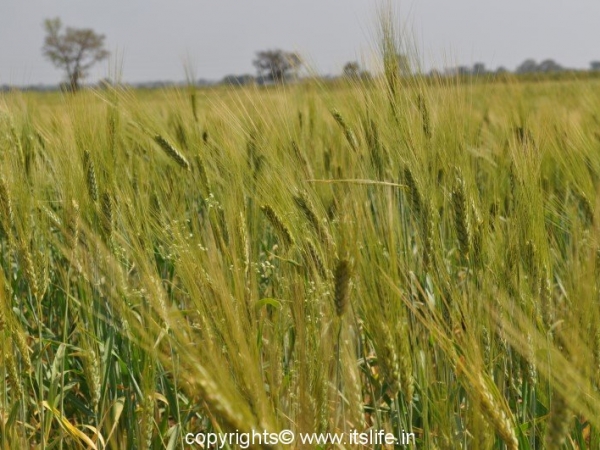Wheat or Godi in Kannada is widely consumed in India. It is known as Gehun in Hindi, Marathi and Urdu. In Sanskrit it is Arupa, Bahudugdha, Godhuma. The botanical name is Triticum aestivum and belongs to Poaceae (grass) family.
Wheat is an annual grass grown for its seed, which is a cereal grain. It is believed that wheat was first cultivated in 9600 BCE. It is popular all over the world for containing all the goodness of health.
Wheat normally needs between 110 and 130 days between sowing and harvest, depending upon climate, seed type, and soil conditions. The plant grows in culms, erect, hollow or pithy. Wheat plants grow up to 1.2 meters tall. The leaves are flat and narrow and 20 to 38 cm long and 1.3 cm broad.
The flower spikes are long, slender, compressed and looks flat. The seeds are either white or red. China produces the highest yield followed by India.
Wheat is inedible when uncooked. It is usually made into a flour and cooked to make it edible. The nutrient value of wheat is retained even after processing it into flour. The maximum benefit of wheat is derived from products made from whole-wheat flour and not the refined flour.
The daily food is prepared using Wheat flour like Cereals, bread, Indian Bread, Pasta, crackers, bagels, cakes, and muffins.
Wheat is the most sought after cereal as it contains protein, dietary fiber, vitamins, and essential minerals. It lowers the risk of coronary heart disease, stroke, cancer, type 2 diabetes, obesity, and so on.
The grass after separating the seed is used for roofing and as fodder.
Fresh grass juice, if consumed immediately has many health benefits.
In India, as Wheat is a staple food, it is considered auspicious and young plants are used during festivals like Chaitra Gowri. Wheat is also grown to represent a forest in doll arrangements made during Dasara festival in Mysore region.




